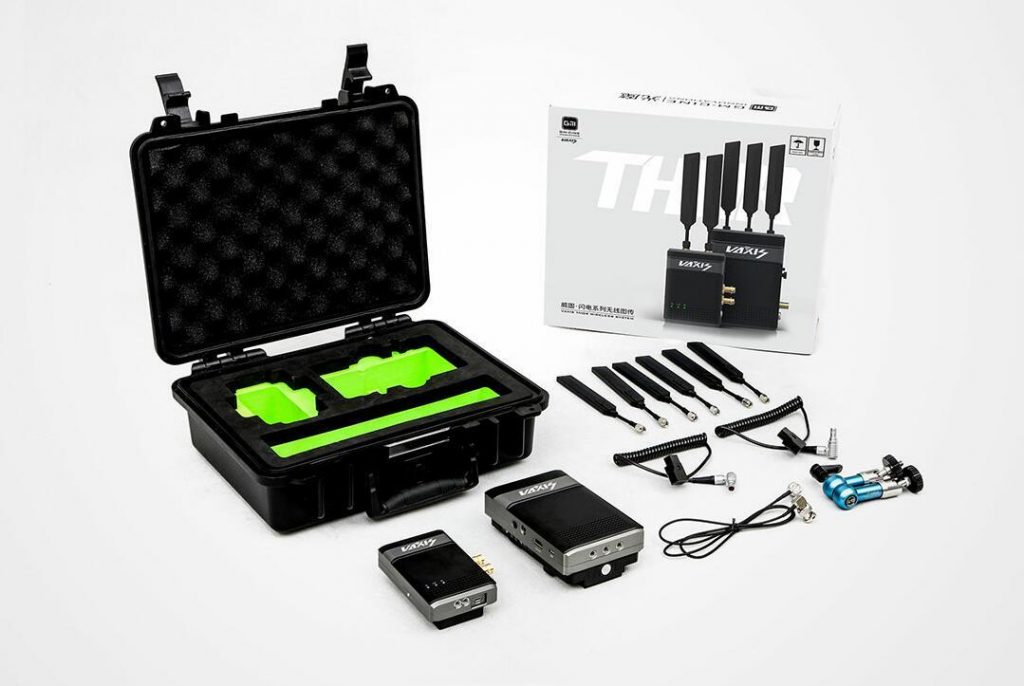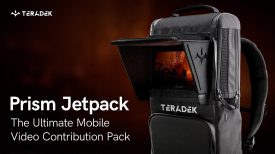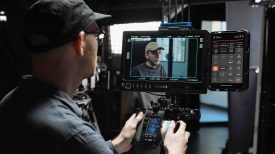
The Vaxis Thor 800ft+ wireless video transmission system is capable of transmitting visually lossless 1080 60p video and audio up to 200-250 meters. The Thor 800ft+ is the third model in the Vaxis wireless lineup and joins the Storm 500ft+ and Storm 1000FT+ which have been popular choices for those deciding between other wireless systems such as Teradek’s Bolt due to their price point and features.
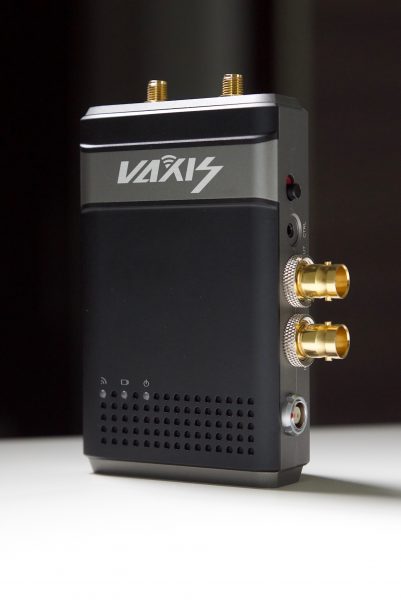
I reviewed the Storm 500ft+ earlier this year and found it to be a very capable system that was reliable, easy to use and well built. At $1,880 USD it was significantly cheaper than a lot of its competition.
Are the chips being used authentic?
There has been lots of speculation and accusations that the Vaxis wireless systems weren’t using genuine or legal parts. Well, let me try and put all of this into perspective. Some of the original Vaxis products, such as the Storm (up until the start of June 2018) were using grey market Amimon chips, not modern Amimon technology. These units that were being brought into the USA were using an outdated FCC ID that did not give them permission to use DFS channels or manual channel selection.
That was the past, now all of the Vaxis products including the Thor 800ft+ are using authentic Amimon chips. Amimon chips are also used in ARRI’s Wireless Video System (WVS), Teradek’s Bolt lineup, the Paralinx ACE, as well as the smallHD 703 Bolt Wireless Monitor.
In fact, the Vaxis Thor is the companies first offering to feature Dynamic Frequency Selection (DFS) which is compulsory for devices that operate on the 5Ghz band to prevent any interference with radar systems. It does this by detecting any frequency pulses during the channel selection process and moves its transmission to another channel if any pulses are detected.
Vaxis tell me that the Amimon chip they are using in the Thor 800+ is more powerful than the one found in the Teradek Bolt LT 500, but I have no way of independently verifying that claim.
UPDATE
While the Vaxis Thor 800+ is using an authentic Amimon chip, that particular chip can only be legally used in China. This product does not have FCC certification and is illegal to use or purchase within the US.
Build quality
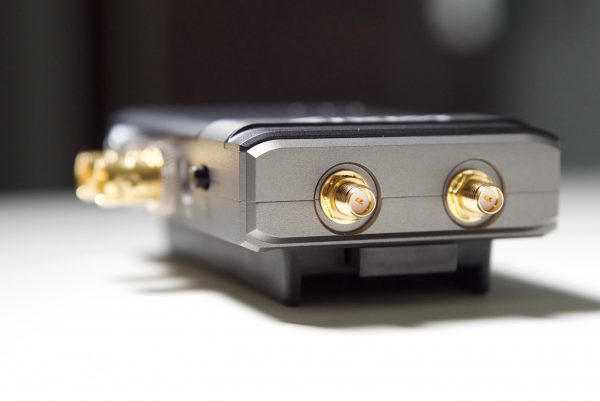
Both the transmitter and receiver are made out of aerospace grade aluminium alloy materials. Vaxis claim that the materials being used make the units more drop resistant as well as being more efficient at dissipating heat.
They definitely feel well made and solidly constructed. All the buttons and connectors are robust It certainly feels like it would stand up to the rigours of field use without any problems at all.
Weight and size
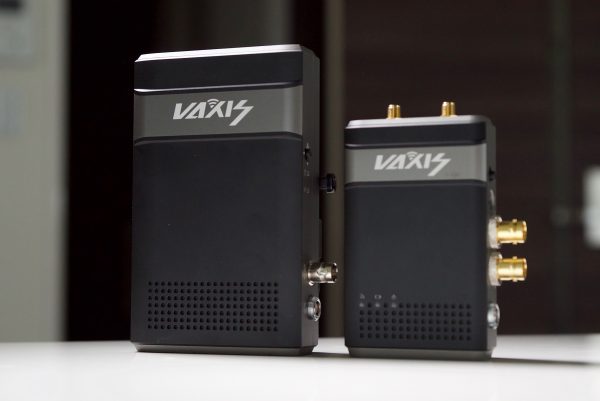
The transmitter has physical dimensions of 117mm x 83mm x 23mm (4.6″ x 3.26″ x 0.9″) and weighs in at 230 g (8.1 oz). The receiver has physical dimensions of 147mm x 101mm x 28mm (5.78″ x 3.97″ x 1.1″) and weighs in at 410 g (14.46 oz).
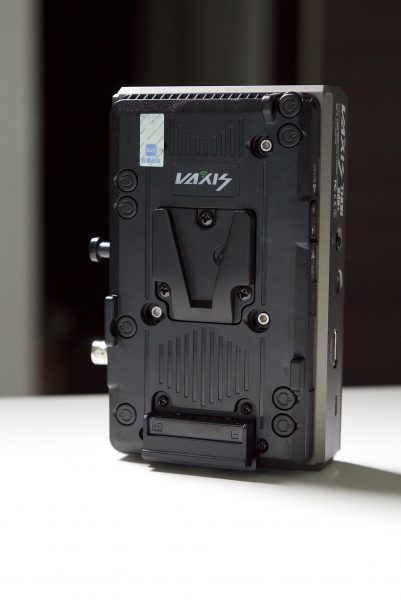
The reason the Thor 800ft+ receiver is so big and heavy is that it has a built in v-lock battery plate.
Neither the transmitter or the receiver is what I would call lightweight. To put their weight into perspective, let’s compare it to the popular Teradek Bolt 500 XT:
Thor 800ft+ Transmitter 230 g (8.1 oz)
Teradek Bolt 500 XT Transmitter 226g (8.0 oz)
Thor 800ft+ Receiver 410 g (14.46 oz)
Teradek Bolt 500 XT Receiver 299 g (10.5 oz)
As you can see from the comparison the Teradek Bolt 500 XT (Deluxe kit) and Thor 800ft+ receivers are roughly the same weight, but the Thor 800ft+ receiver is heavier than the Teradek Bolt 500 XT receiver. It is important to note that the Teradek Bolt 500 XT (Deluxe kit) receiver comes with a v-lock or Anton Bauer Gold Mount battery plate just like the Thor.
If we look at a size comparison between the Teradek Bolt 500 XT (Delux Kit) and Thor 800ft+ this is what we find:
Thor 800ft+ Transmitter 117mm x 83mm x 23mm (4.6″ x 3.26″ x 0.9″)
Teradek Bolt 500 XT Transmitter 101.5mm x 66mm x 24mm (4.47″ x 2.6″ x 0.95″)
Thor 800ft+ Receiver 147mm x 101mm x 28mm (5.78″ x 3.97″ x 1.1″)
Teradek Bolt 500 XT Receiver 152mm x 86mm x 25mm (4.5″ x 3.4″ x 1.0″)
As you can see the Teradek units are smaller, but not by a large margain.
With the size of the Thor 800ft+ transmitter, I found that it didn’t get in the way when using it with a larger camera like the ARRI Amira. If you plan on using it with a smaller camera then you definitely need to take into account it’s physical size.
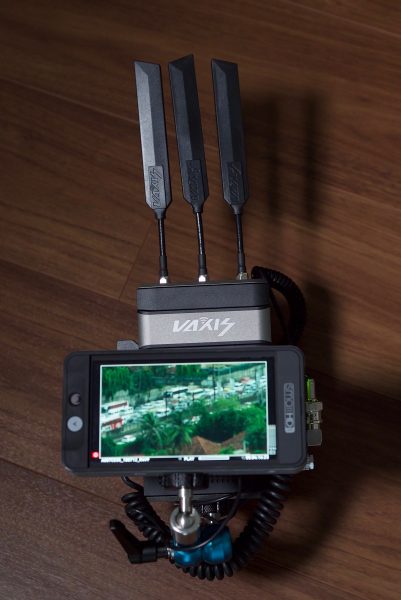
With the Thor 800ft+ receiver being as large and heavy as it is, you do need to factor this in if you plan on using it with a directors monitor.
Powering options
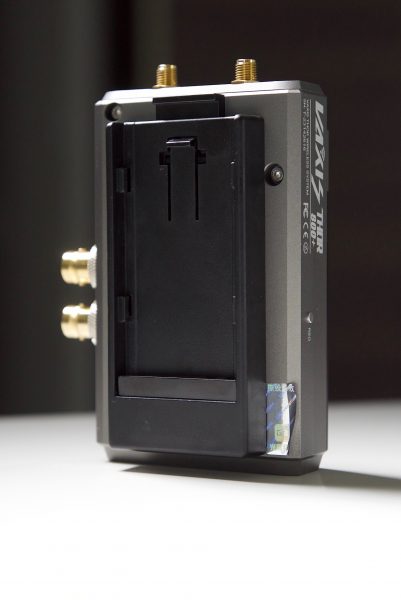
The transmitter is powered by a Sony NP-F style battery while the receiver can be powered by a V-mount battery via the built-in V-lock battery plate (an Anton Bauer Gold Mount option is also available). Both units can also be powered through a 2-pin LEMO port and Vaxis includes two LEMO to D-Tap power cables in the kit.
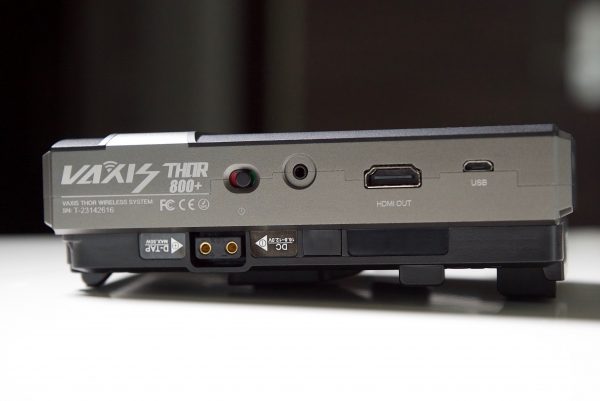
On the Thor 800ft+ receiver unit the V-lock battery plate has two D-Tap power outputs which mean you can power both the receiver unit and a monitor off the same battery. This is very handy indeed and makes powering everything a lot easier and more convenient.
Inputs/outputs and cross-conversion
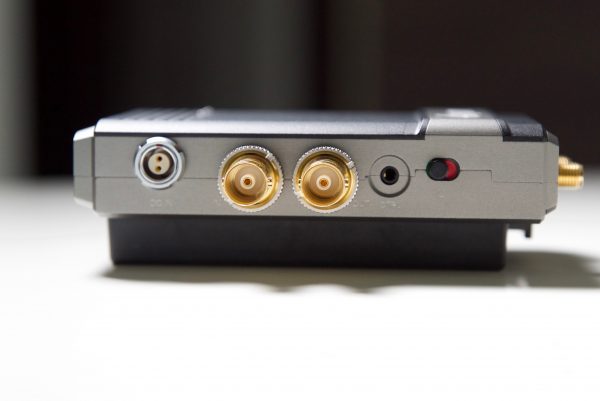
The Thor 800ft+ transmitter has both an SDI in and an SDI out. It doesn’t have an HDMI in. The receiver has one SDI out and one full-sized HDMI out. The receiver unit also supports cross-conversion from SDI to HDMI and vice versa.
Again if we compare this to the Bolt 500 XT (Deluxe kit), here is what we find:
Thor 800ft+ transmitter 1 x SDI In 1x SDI Out No HDMI In
Bolt 500 XT transmitter 1 x SDI In 1x SDI Out HDMI In
Thor 800ft+ receiver 1x SDI Out HDMI Out
Bolt 500 XT receiver 2 x SDI Out HDMI Out
As you can see the Teradek Bolt 500 XT has a few more options than the Thor 800ft+ when it comes to video in and outputs. The Bolt 500 XT receiver has an HDMI input unlike the Thor 800ft+ and the Bolt 500 XT receiver also has the added benefit of an additional SDI output.
Both the Bolt 500 XT and the Thor 800ft+ do cross-conversion.
Frequency band, latency, and encryption
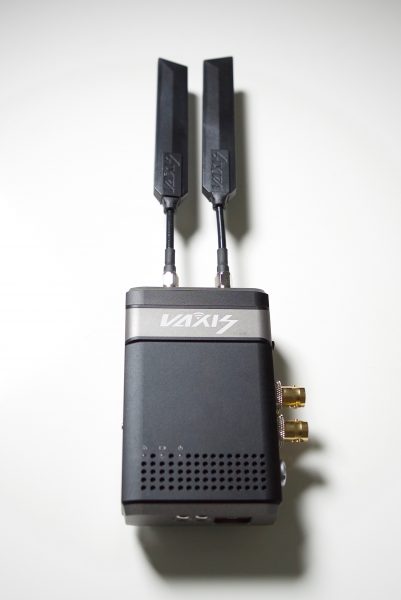
The Thor 800ft+ works in the 5GHz ISM frequency band and the company claims that it has zero latency. Unlike the Storm that I reviewed earlier in the year, the Thor 800ft+ has the ability to encrypt the video transmission using AES-128 & RS 1024 key exchange. The Thor system also supports metadata, timecode, and start/stop flags from ARRI, RED, Canon, Panasonic, and Sony cameras.
Mounting points and options
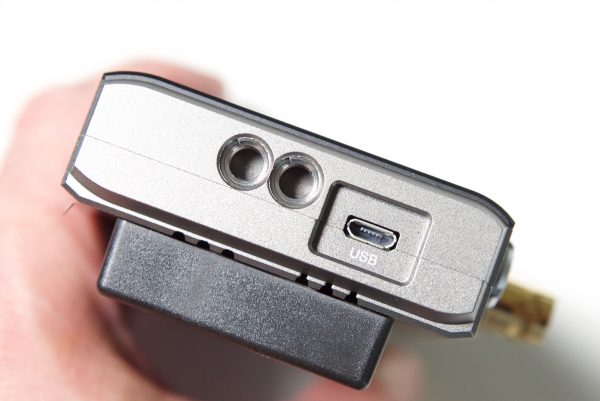
The Thor 800ft+ transmitter has two 1/4 20″ mounting holes on the bottom of the unit and the receiver has three 1/4 20″ mounting holes that are also located on the bottom. Vaxis does include a 7“ articulating magic arm in the kit, but I would have preferred to have seen them include an additional one so you had mounting options for both the transmitter and the receiver.
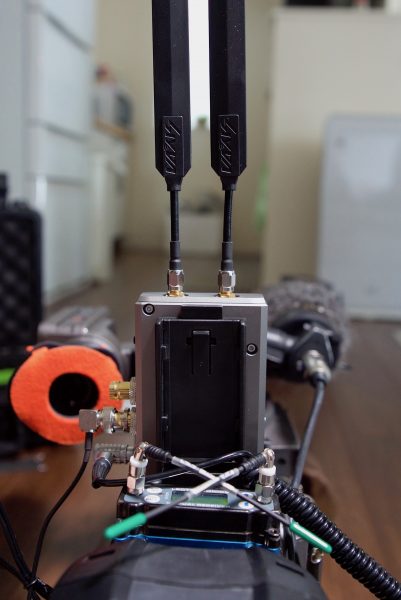
With mounting points only on the bottom of both units, it does make mounting a little bit more tricky. I would prefer to mount my transmitter on top of my camera or on the side of a v-lock camera battery using velcro, but that can only be done if you stand the unit up vertically. Because there is an integrated Sony NP battery plate on the back you can’t put velcro there. I would prefer it if Vaxis had made the battery plate removable.
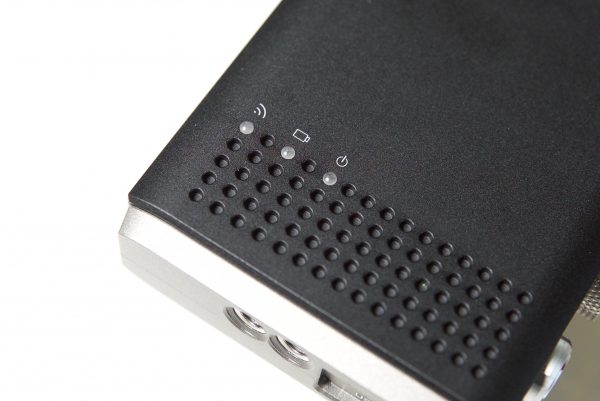
You could mount velcro to the other side of the unit, but then you end up covering the area where the heat is dispersed as well as obscuring your view of the battery, wireless signal strength, and power lights.
If you try to mount velcro onto the side of the unit opposite where the video inputs are you end up covering the small registration button. I’m not sure why Vaxis had to put that there.
In comparison, the Teradek Bolt 500 XT has an integrated NATO rail on the receiver, several 1/4”-20 and 3/8” mounting points, and an ARRI rosette on the transmitter. The Teradek Bolt 500 XT (Deluxe kit) does come with a Wooden Camera Ultra Arm Mini Monitor Mount (1/4-20 to 1/4-20) with Arm Ball (3/8-16), Wooden Camera NATO Lock Kit, as well as a Hot Shoe Adapter (1/4″-20 inch) and Lightstand Adapter (1/4″-20 inch).
I thought Thor used a hammer and not a sword?
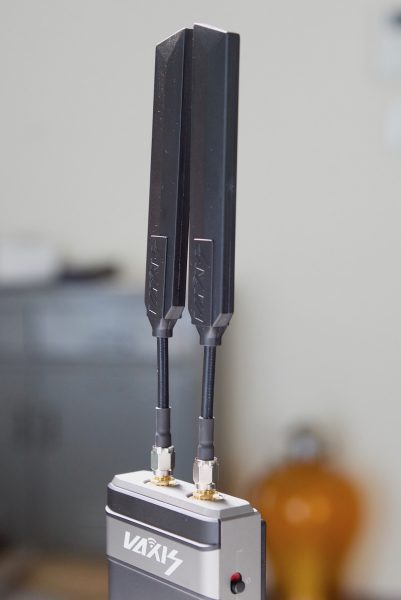
The Thor transmitter uses two “Sword” antennas, and the receiver uses three antennas. The antennas look more like propellers from a drone than the type used on most other wireless devices. The reason behind this design is that it helps the antennas mitigate dBi loss from reflections because the polarization does not change when the waves reflect off surfaces. The “sword” antennas have ceramic plates inside of them that according to Vaxis, increases the signal strength. This “Sword” design was pioneered by Vaxis and now many companies such as Movcam and Kinefinity are using it.
They have also been designed to be very flexible and you can bend them around without having them break. The Thor 800ft+’s wireless signal will potentially not be as robust as a Bolt 500 XT due to the specific chipset that is being used. Also the Thor 800ft+ uses 3 antennas on the RX which may not give you as robust wireless performance as Teradek (and other manufacturers) receivers that use 5 antennas. I haven’t personally been able to test this as I didn’t have access to a Bolt 500 XT while I was reviewing the Thor 800ft+.
No display screen
Unlike the Storm 500+ that I reviewed earlier this year, the Thor 800ft+ doesn’t have a screen on either the transmitter or receiver. I liked the screen that was on the Storm 500+ and would have preferred to have seen a screen on the Thor 800ft+.
To make menu changes on the Thor you need to have the system hooked up to an external monitor and then you can access a menu via on-screen displays.
Specifications
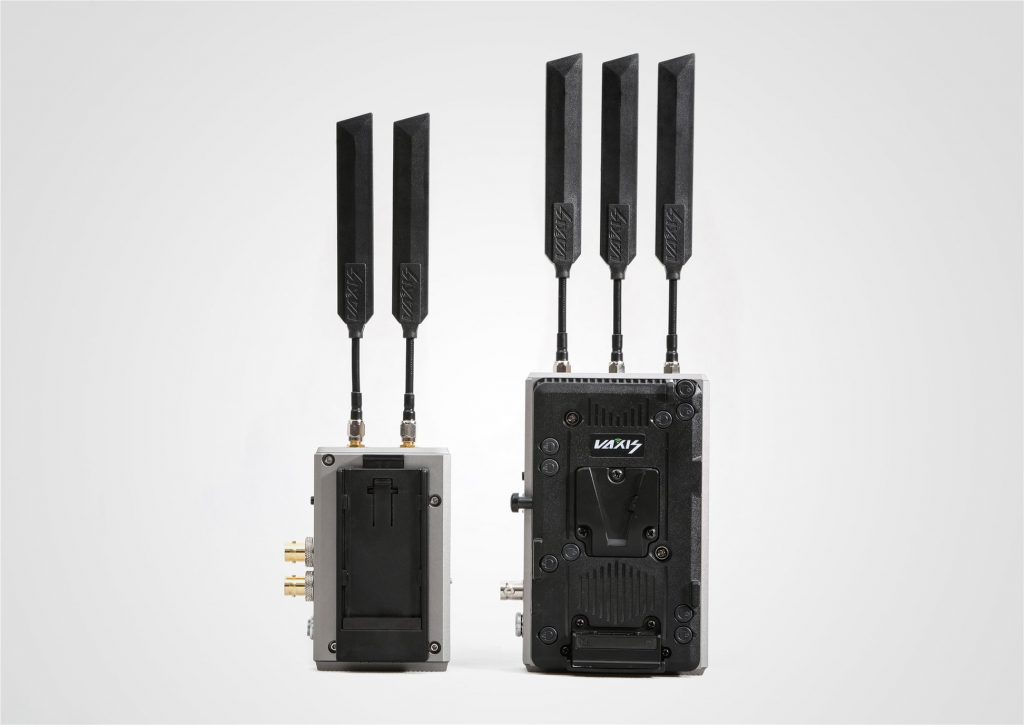
1. Wirelessly transmit visually lossless 1080p60 Video/Audio
2. Distance: up to 200-250 meters.
3. TX: SDI In & SDI Out
RX: SDI Out x1, HDMI Out x1
4. Support HDMI & SDI embedded audio transmission.
5. TX with 2 stick antennas, RX with 3 stick antennas.
6. Power solution:
A. TX with Sony NP-970 plate, RX with V mount/ Gold mount plate.
B. 2-Pin LEMO to D-Tap Power Cable.
7. Support camera metadata, timecode, and start/stop flags.
8. Supports DFS: Operate interference-free more often in the USA and Europe by making use of introduced DFS channels.
9. Reconnect times during a dropped link are now instantaneous once you move back into range.
10. USB firmware upgrade.
11. All-metal housing, durable.
What do you get in a kit?
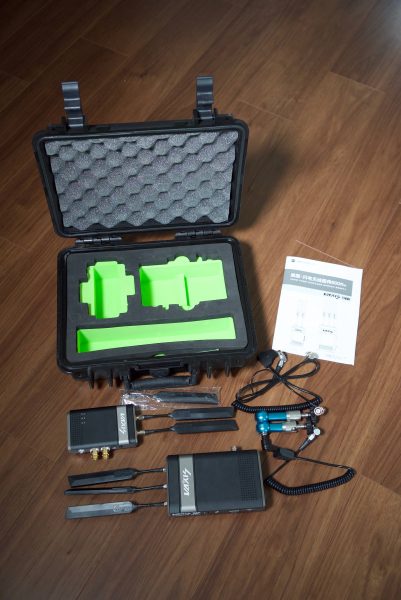
The basic Thor 800ft+ kit comes with the following:
1x unit transmitter
1x unit receiver
6x 5GHz Vaxis sword antennas
1x 7“ articulating magic arm
1x SDI cable
2x DC convert cable (LEMO 2 pin-male to D-Type*receptacle)
2x battery plates
1x user manual
1x VAXIS flight case
I like that you get a nice hard case with laser cut inserts that fit everything inside in a nice neat and tidy way. Getting a kit that comes with just about everything you need is a nice touch, but it is slightly puzzling that Vaxis only include one SDI cable and one 7“ articulating magic arm. Given you have one receiver and one transmitter, why not just include an additional articulating arm and another SDI cable?
In comparison here is what you get in the Teradek Bolt 500 XT (Deluxe kit):
- 1 x Protective SKB Case – military-standard waterproof hard case with custom foam (13.5in x 9.5in x 6.5in – 34.29cm x 24.13cm x 16.51cm)
- 1 x Wooden Camera Ultra Arm Mini Monitor Mount (1/4-20 to 1/4-20) with Arm Ball (3/8-16)
- 1 x Wooden Camera NATO Lock Kit
- 1 x Teradek Vinyl Zipper Bag 250x150mm
- 1 x Hex L Key 2.5 mm size 3-5/6 inch length
- 1 x Hex L key 3/16inch x 2 13/16inch length
- 1 x factory-installed Gold Mount (female) Battery Plate 14.4V attached to RX
- 1 x 2-pin Connector to PowerTap 18 inch Cable
- 1 x Hot Shoe Adapter (1/4″-20 inch)
- 2 x Antenna 2dBi WiFi 2.4/5.8 GHz
- 1 x USB 2.0 Cable (A-Male to Mini-B)
- 1 x HDMI 18in Cable (Type A to Type A)
- 1 x SDI (BNC to BNC) Cable 10 inch
- 1 x Lightstand Adapter (1/4″-20 inch)
- 1 x USB 2.0 Cable (A-Male to Mini-B)
- 1 x PSU 2-Pin Connector to 18W AC Adapter 6ft cable
- 1 x HDMI 18in Cable (Type A to Type A)
- 1 x SDI (BNC to BNC) Cable 10 inch
Set up and ease of use
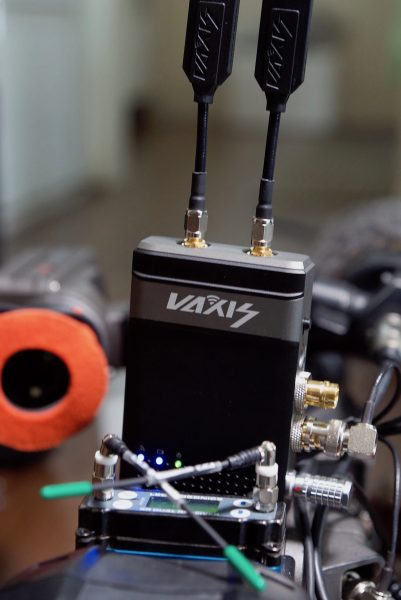
A good wireless video solution should be easy and fast to set up and get running. In all honesty, this shouldn’t be a difficult task, and if it is, then the product has already failed in my opinion.
The Thor 800ft+ was virtually plug-and-play. I hooked up the transmitter to my camera, connected an SDI cable and then hooked up the receiver to a smallHD monitor and turned everything on. Without having to do anything I instantly got a picture. This is how a wireless system should be, quick and easy to use.
So far so good, but I wanted to see what would happen if I lost connection, so I turned the receiver off and then back on again. It took roughly 5 seconds for the receiver to re-establish a connection which was nice and quick.
Next, I turned the transmitter off, which is more commonly what may happen when you change over a camera battery or power the camera off and then on again. This time it took around 9 seconds for the picture to re-establish. In comparison when I tested the Storm 500+ and did the same thing I got a picture back within 5 seconds.
What about if I pulled out the SDI from the camera? This time the system re-established connection almost instantly.
So what would happen if I suddenly changed the frame rate to 60fps (still in a 23.98p recording mode) on my camera while the system was on? Absolutely nothing changed. I didn’t even lose the picture for a second. When I changed the camera back to 23.98fp, again nothing changed and the picture remained.
Now the Thor 800ft+ is claimed to support up to 60p in full HD, so I decided to test that claim. Again this was no problem at all, and the Thor 800ft+ receiver re-established a connection in under 5 seconds.
In the final test, I wanted to change the operating channel and see what would happen. I changed the receiver to a different channel and then changed the transmitter to the same channel. Again in less than 3 seconds, I had a picture back.
I really tried hard to fault the Vaxis Thor 800ft+ with all these tests, and no matter what I did the system always re-established a connection without me needing to do anything. Not once did I have to reboot both the transmitter or receiver. This is a strong indication to me that the system is reliable and easy to use.
Real-world performance
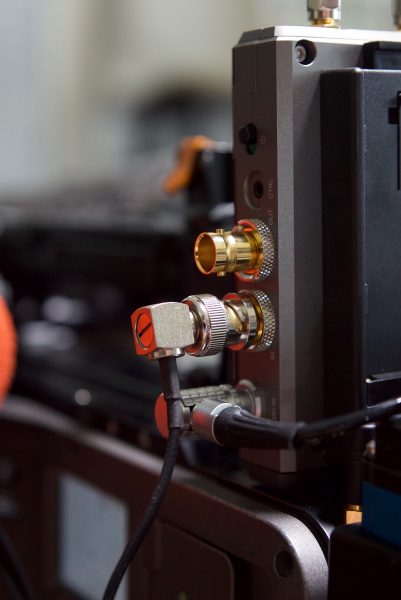
Pulling out connectors, changing settings and turning receivers and transmitters on and off is one thing, but how does it actually perform in the real world? Vaxis recommends that to get the best wireless transmission performance, both the transmitter and receiver need to be at least 1.5m above the ground. Keeping both the receiver and the transmitter at similar heights also helps with performance.
The real transmission distance is also relevant to the current air electromagnetic environment, because the system works in the ISM band, and therefore has exposure to all kind of 5GHz band air interference. Vaxis recommends users should do a manual frequency sweep by adjusting the frequency selection knob with a circle before using the equipment, that way you can select the best frequency channel for stable performance.
With this in mind, I decided to test the systems range and performance. To test the systems range I remained in line of sight of the camera and started walking away with the receiver. I found that I could get around 300m before the signal dropped out. This distance was around 100m further than the Vaxis Storm 500ft.
Now in saying this, I did find that the receiver needed to be facing towards the transmitter and you have to be careful not to block the top of the receiver where the inbuilt antennas are. If you place your hand or something over the top of this part of the receiver the signal tends to disappear fairly quickly.
When the signal did disappear, I had to wait until I was back in range before it re-connected. The system seems to be very stable as long as you didn’t start pushing the boundaries of its operating range. In most cases when it did lose the connection it was able to re-establish it without the need for re-booting the transmitter and receiver.
I also tried going downstairs around corners and placing a lot of metal and concrete in between the transmitter and the receiver. I wanted to do this to see how it performed when you didn’t have a line of sight. Even with so many obstacles in the path between the receiver and the transmitter the signal was still very strong. When I did start to get some interference it re-established a strong connection once I moved closer.
Competition
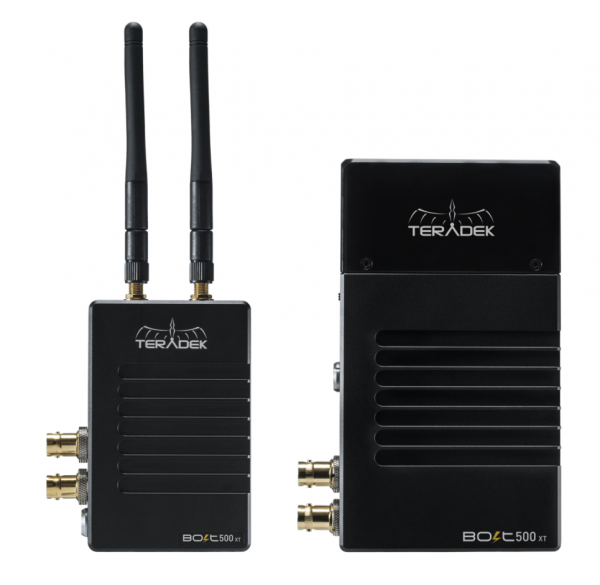
The Thor 800+ sits somewhere between a Bolt 500 LT / XT and Bolt 1000 LT / XT due to its range. But for a head-to-head comparison, I will compare it directly against the Teradak Bolt 500 XT. While there are a lot of similarities between the two products, there are also some key differences.
As I mentioned earlier the Bolt 500 XT receiver and transmitter are slightly smaller and lighter than the Vaxis Thor 800ft+. The Bolt 500 XT has more video input and outputs that the Thor 800ft+ on both the receiver and transmitter.
As I mentioned earlier in the review, the Thor 800ft+’s wireless signal may not be as robust as a Bolt 500 XT due to the specific chipset that is being used. Also, the Thor 800ft+ uses 3 antennas on the RX which may not give you as robust wireless performance as Teradek (and other manufacturers) 5 antenna receivers.
PRICING & AVAILABILITY
The Vaxis Thor is available in either a 1:1 or 1:2 kit with
1:1 SDI/HDMI Transceiver Set – $2,490
1x unit transmitter
1x unit receiver
6x 5GHz Vaxis sword antennas
1x 7“ Articulating magic arm
1x SDI cable
2x DC convert cable (LEMO 2 pin-male to D-Type*receptacle)
2x battery plates
1x user manual
1x VAXIS flight case
1:2 SDI/HDMI Transceiver Set – $3,735 USD
1x unit transmitter
2x unit receiver
9x 5GHz Vaxis sword antennas
1x 7“ Articulating magic arm
1x SDI cable
3x DC convert cable (LEMO 2 pin-male to D-Type*receptacle)
3x battery plates
1x user manual
1x VAXIS flight case
Extra Transmitter – $1,245 USD
1x unit transmitter
2x 5GHz Vaxis sword antennas
1x SDI cable
1x DC convert cable (LEMO 2 pin-male to D-Type*receptacle)
Extra Receiver – $1,245 USD
1x unit receiver
1x DC convert cable (LEMO 2 pin-male to D-Type*receptacle)
3x 5GHz Vaxis sword antennas
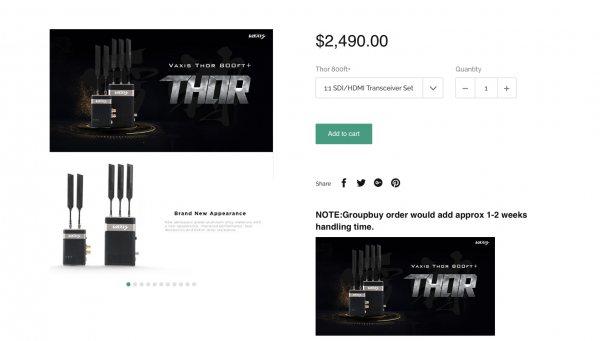
The Thor 800ft+ is available to buy directly from the Vaxis online store. This is an affiliate link and Newsshooter will receive a small commission on any sales. The review unit was provided on loan by Vaxis and is not sponsored in any way.
Comparatively, the Teradek Bolt 500 XT 1:1 Deluxe kit retails for $2,990 USD, which is $500 US more than the Thor 800ft+. Both manufacturers include a lot of accessories and extras in their respective kits.
Conclusion
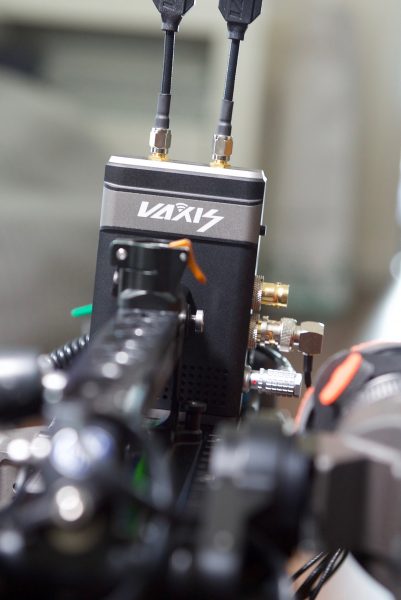
If I’m going to use a wireless video transmission system it has to be easy to set up, easy to power and most importantly reliable. If I’m working as a solo shooter or in a small team I don’t have the time to keep going back to a producer or a director to sort out wireless problems. If a problem does need to be addressed, then the system should be easy enough to be fixed by a producer or a director without them having to bother me (I know, wishful thinking!).
For my wireless needs, I have been pretty happy with the Teradek Serv Pro. It’s easy to set up and I don’t have to have extra monitors, power supplies and receivers for people to see what I am doing. In saying that, it does occasionally drop out and certain directors or projects are looking for a more latency free and reliable directors monitor than what the SERV Pro can offer. For these clients, using something like the Thor 800ft+ would make more sense.
The Thor 800ft+ is far from being a Chinese Teradek knockoff. Despite lacking some of the functionality and features of a Teradek Bolt 500 XT, it is still using an Amimon chip (although probably not the same one). You should never judge a book by its cover, and having a pre-conceived notion that just because something is made in China that it’s not going to be any good is just naive and ignorant. Here at Newsshooter, every product that we review gets the same fair and honest evaluation no matter who makes it or where it comes from. Just be aware that this product can’t be leegally sold or used in the US.
The Vaxis Thor 800ft+ isn’t perfect but it does exactly what it’s supposed to do and it does it with minimal fuss. From my experience testing the system, I found it to be reliable, easy to use and well built. At $2,490 USD it is cheaper than a lot of its competition and offers excellent value for money.

